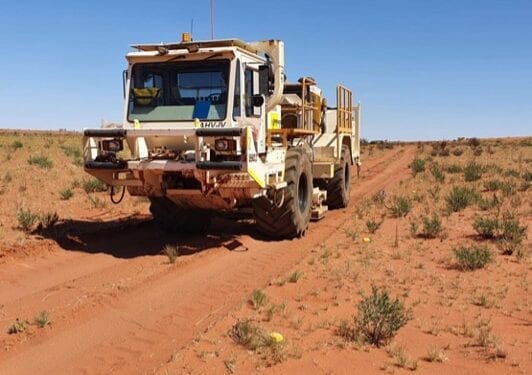Area Of Interest Defined Over 14km at HN5, HN6 And HN9
Magnetic Resources (ASX:MAU) has identified multiple new gold targets in nine areas totalling 14km within HN5, HN6, HN9 and Lady Julie in Western Australia.
A recent 2D seismic survey combined with results from recent major drill programmes as well as historical drillings results have led to the interpretation of 14km of gold targets.
The best-looking target so far besides the 3km-long HN9 mineralisation, are Lady Julie North (3.4km long) and Lady Julie Central (1.5m long). At Lady Julie North there are many mineralised intersections including 18m at 2.1g/t Au from 32m (eoh) in MLJRC162 and 13m at 1.37g/t Au from 3m in AJC01. Also, there are numerous untested NS workings which are planned to be drilled called Lady Julie North 2.
At Lady Julie Central there are several high-grade intersections including 4m at 16.66g/t Au from 32m in MLJRC214, 8m at 9.23g/t Au from 24m in RFB226 and 4m at 8.36g/t Au from 18m in RFB206.
The Lady Julie Central gold target is now interpreted to trend to the NNE rather than NS. This enlarges the target potential size to 1.5km and further drilling is warranted further to the NNE to see whether it may eventually link into the Lady Julie North target. These two gold target zones have been defined by both recent drilling results and reinterpretation of existing drilling.
Areas that were not previously tested have come up with new significant intersections at HN9 Thrust 3 and HN6 Thrust 2, with further drilling planned test these areas. The thrust zones continue to the north and south over an extensive 6km length.
Other previously drilled areas include HN9 Thrust 2, which is positioned on Thrust 2. At Lady Julie North 1 and 2, the targets are compelling because they are associated with the two parallel Thrusts 7 and 8.
Interestingly, both the mineralised targets at HN9 and Lady Julie North appear to straddle two thrusts, with HN9 being a major 3km-long mineralised zone.
Within the HN5, HN6, HN9 and Lady Julie areas there are many new shallow intersections with a total of 1065 intersections (ranging from 1 to 19m) greater than 0.5g/t Au, which includes 450 greater than 1g/t Au, 162 greater than 2g/t Au, 81 greater than 3g/t Au and 53 greater than 4g/t Au.
A new rig has already started with a programme of 79 holes for 7844m designed to test and extend all nine targets shown in this release with the aim of ultimately converting to an Indicated Resource.
At Hawks Nest 5, 6, 9 and Lady Julie extensive drilling programmes have been completed, including 1,242 RC holes totalling 78,037m (average 63m depth) and four Diamond holes totalling 431m, 16,976 2–5m composites and 9,159 1m splits.
Magnet says there are now at least four discernible mineralised lodes recognised that mostly dip shallowly around 20–30° to the east and plunge shallowly to the northeast within the Central Thickened zone.
There are at least four stacked thickened lodes with some very thick intersections including 104m at 0.82g/t from 8m in MHNRC582 including 20m at 2.23g/t from 95m and 70m at 0.49g/t from 13m in MHNRC541. These multi-stacked thickened lodes show similarities with the adjacent Wallaby, Sunrise Dam and Jupiter major gold deposits. More results are pending for this area and further drilling is already planned to the NE where it remains open.
This Central Thickened Zone crosscuts the NNW-trending near-surface flat-dipping mineralisation and may represent a blowout zone at the intersection of the NNW shear zone with NE-trending porphyries and dolerites, where four separate shallow-dipping porphyry zones coalesce and thicken.
Following on from these exciting new results and outlining of targets associated with the thrust zones, a large drill programme of 79 RC holes for 7,844m testing the nine target areas is planned.











